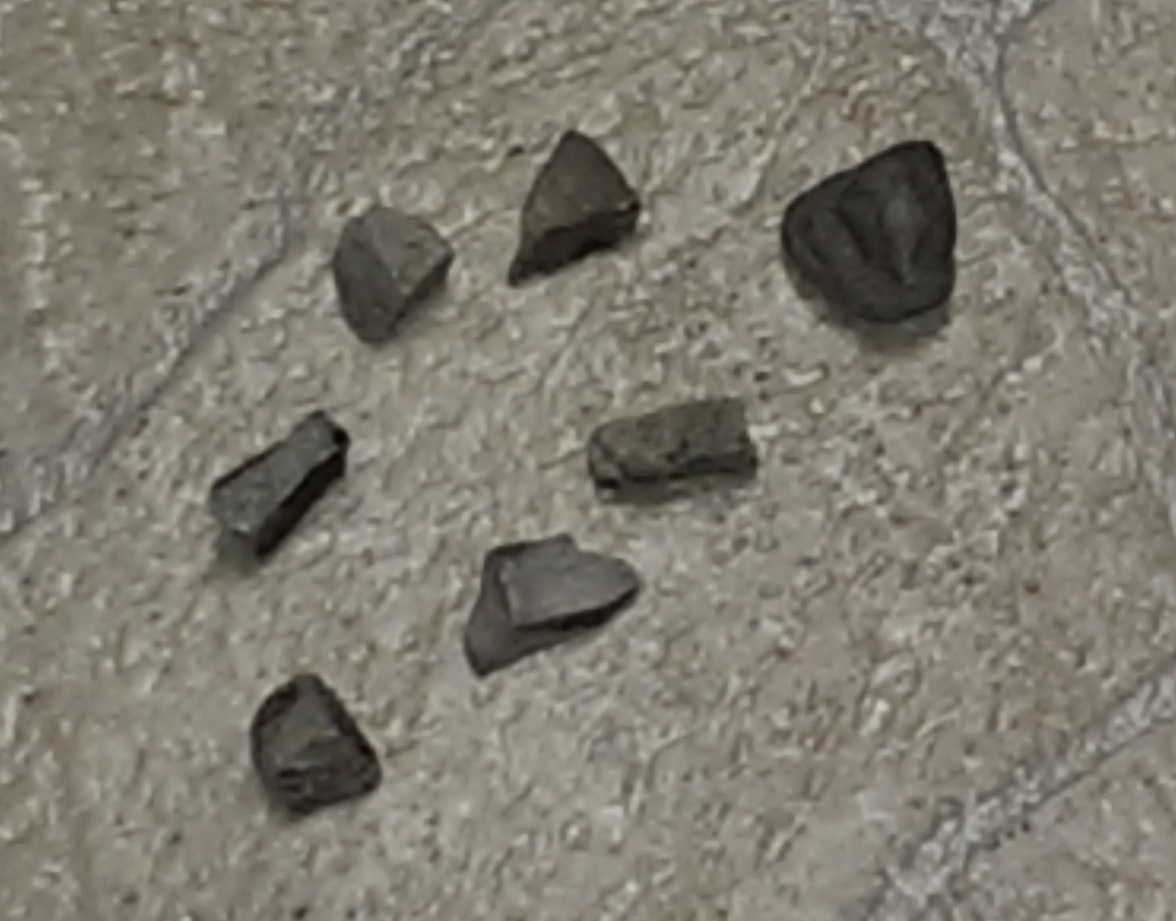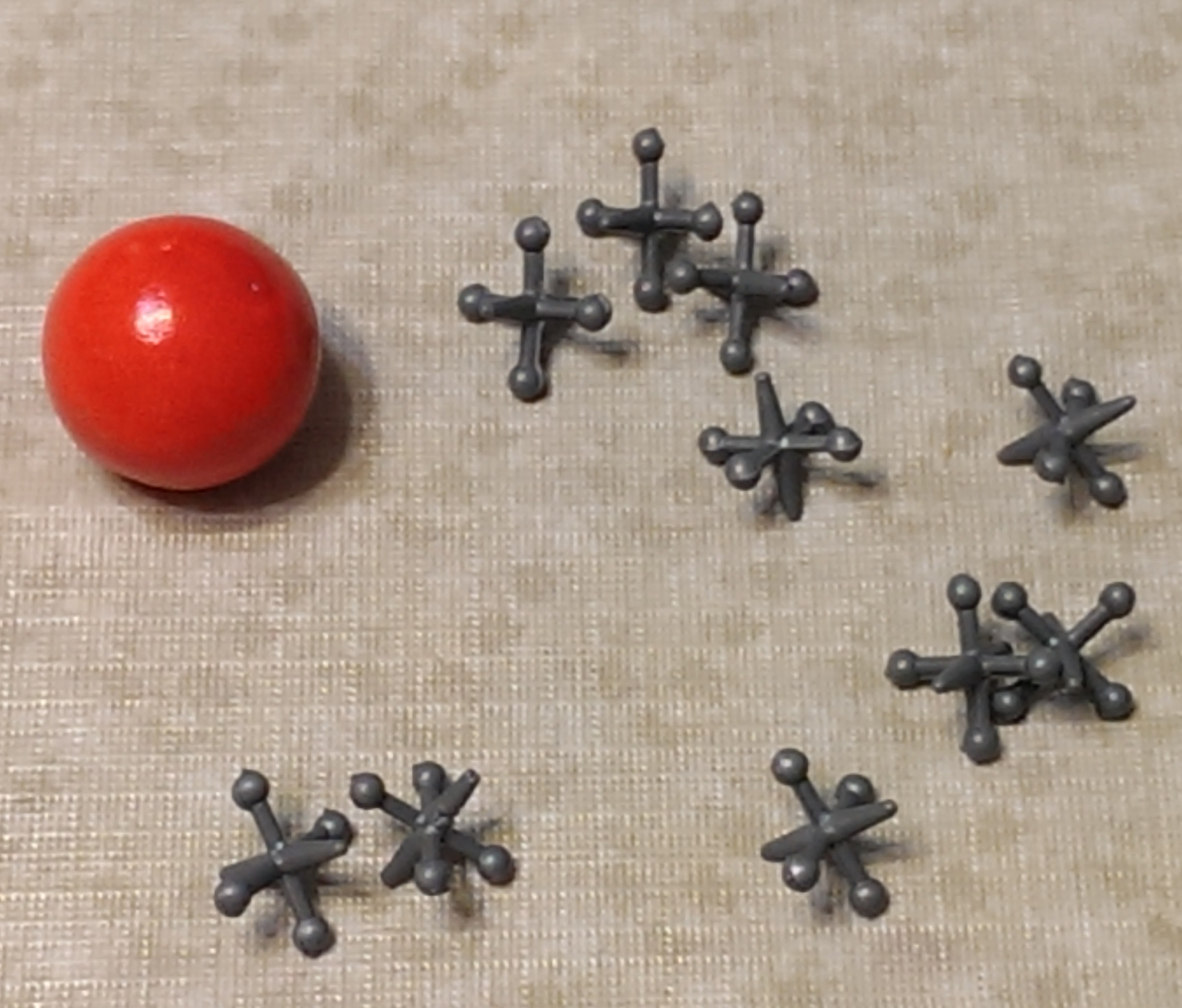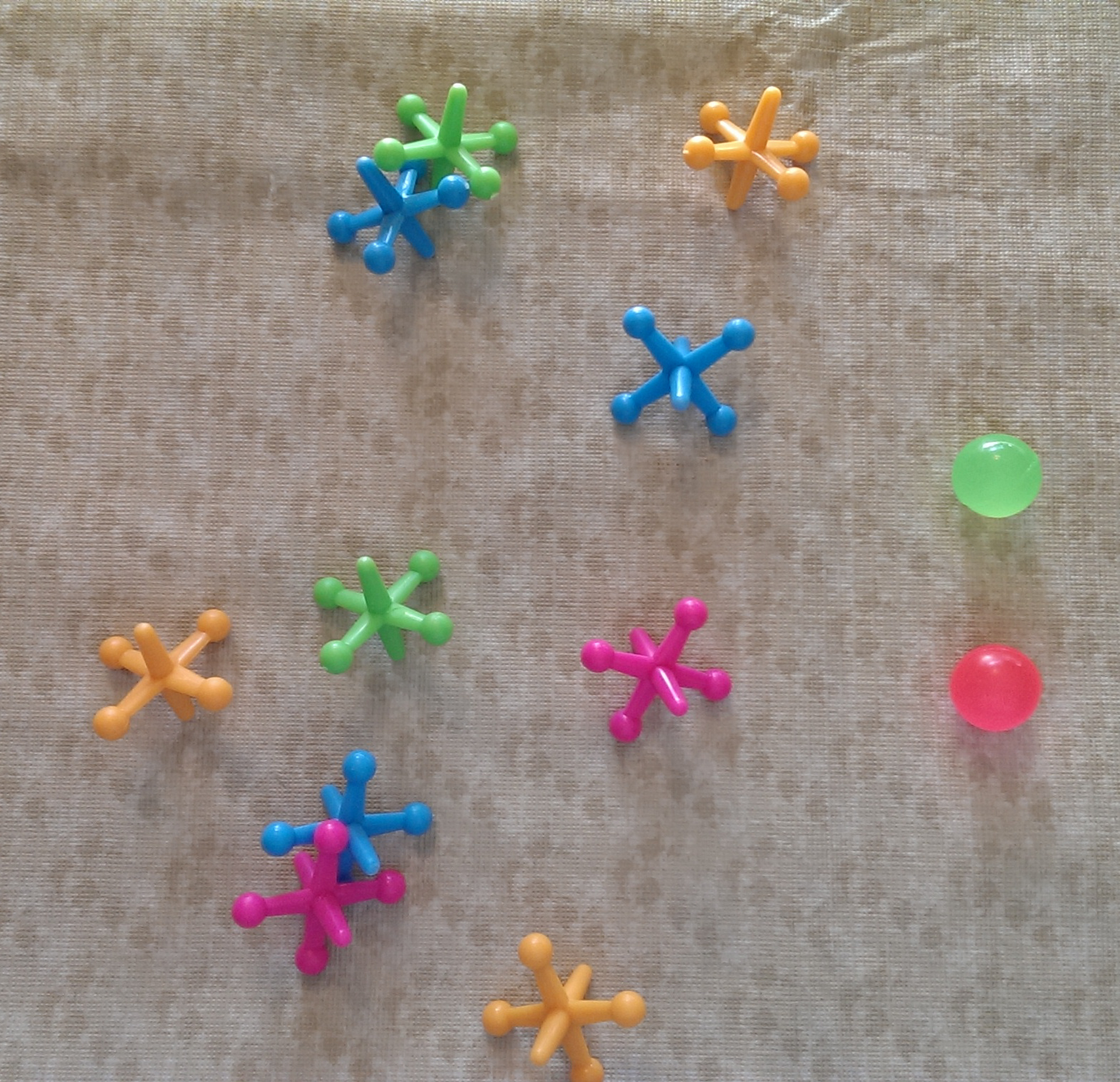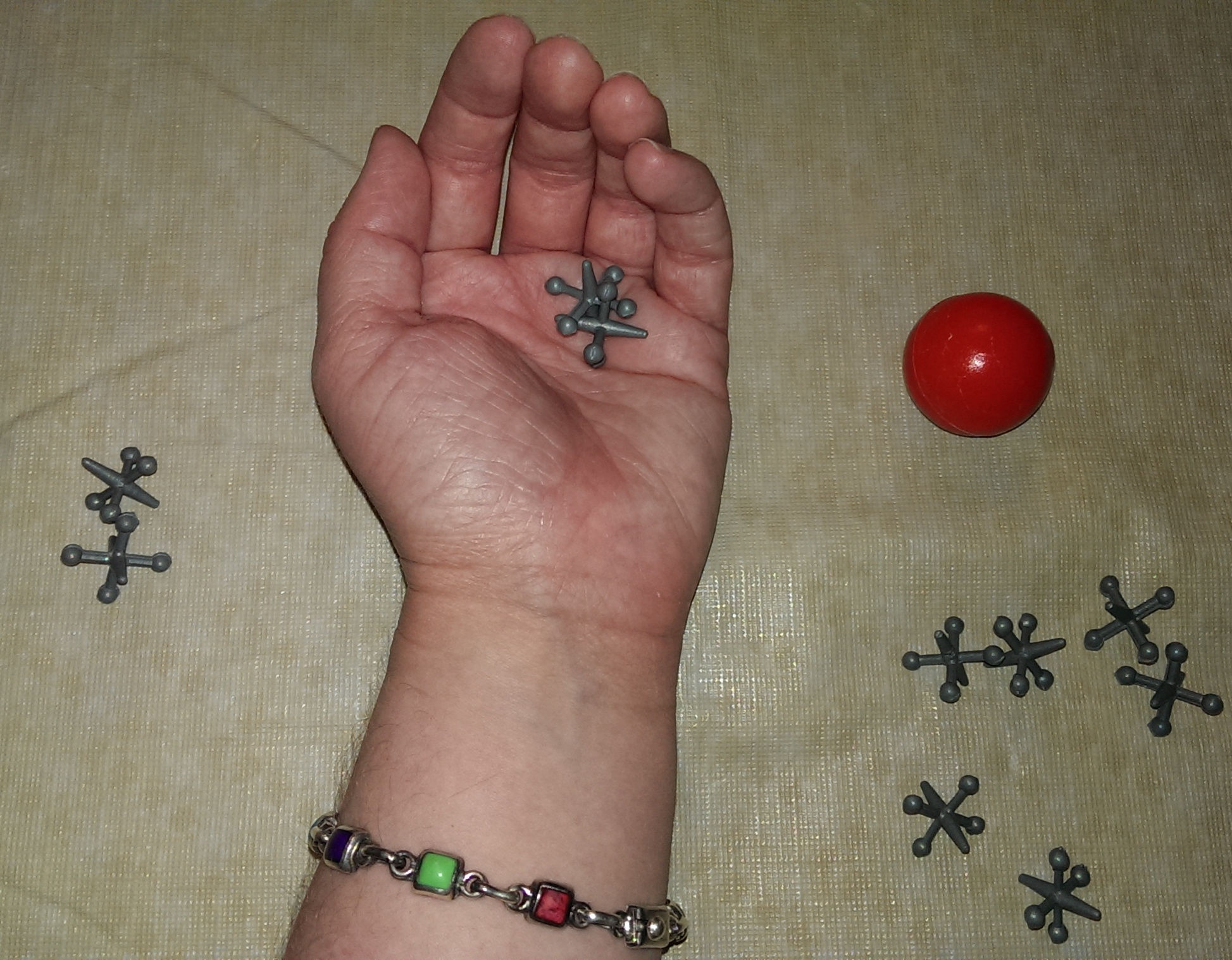
In Colonial America, the game of jacks was known as Jackstones. It's an appropriate name because Colonial children used small stones instead of the 6-pointed metal jacks that are used today. Other small objects, like pumpkin seeds, could also be used in Colonial times (King 39).
Usually, you play jacks on the ground or on a hard-surface floor so that the ball will bounce, but you can also play them sitting at a table. I recommend the floor for most versions of the game, although if you're doing Sheep Over the Fence, a table might be more comfortable.
Jacks (Jackstones)
There are many different games that you can play with jacks. The rules for these versions of the game come from Colonial Days by David C. King, pp. 39-41.
Players: 2 or more
Object: To pick up a certain number of jacks and still be able to catch a ball that you've tossed into the air.
Equipment: 6 jacks or small objects that can be used as jacks (like small stones), a small ball that bounces or another small stone
Note: The game plays a little differently depending on whether you use modern jacks and a bouncy ball or whether you're playing the old-fashioned way with stones. Since stones don't bounce like a rubber ball, you'll have to throw the stone in the air instead of bouncing it, catching it before it hits the ground. Don't toss the stone so high that you can't catch it again easily or that it hits someone by accident.
General Rules
King notes that, even though there are many variations of jacks, these rules are the basis for most games (King 39):

Starting a Game: The first player tosses the ball (or stone) straight up, throws the jacks on the ground, and catches the ball after it bounces once (or catches the stone before it hits the ground). When the jacks hit the ground, it's best if they land fairly close to each other, but they should be apart enough that a player can pick up single jacks without touching the others. However the jacks land, the player isn't allowed to move them except to pick them up.
Picking Up Jacks: Depending on the type of jacks game, the players will have to pick up a different number of jacks in a certain sequence. The player picking up jacks has to toss the ball (or stone), scoop up the right number of jacks, and then catch the ball after it bounces just once (or the stone before it hits the ground), all with the same hand. The other hand does nothing.
As the player picks up the jacks, he can only touch the ones he means to pick up. If he accidentally bumps any of the other jacks, his turn ends immediately. His turn also ends if he makes a mistake in the number of jacks he needs to pick up or doesn't manage to catch the ball at the right time. Then, the play passes to the next player. The player who made the mistake also has to repeat what he was doing on his last turn from the beginning when it's his turn to play again.
In addition to these basic rules, the players will also follow one of the sets of rules below, depending on which variation of the game they want to play.
Ones-Through-Sixes (Onesies, Twosies)
Starting: The game starts as described under the general rules, with one player tossing the ball and scattering the six jacks on the ground.

Playing: On each player's turn, they have to pick up jacks in the following sequence:
- Ones (Onesies): Using only one hand, the player tosses the ball in the air, picks up only one jack, and catches the ball after it bounces just once. Then, the player holds the jack he just picked up in his other hand (to keep it separate from the ones he still has to pick up) and picks up another single jack in the same way. He continues picking up one jack at a time until he has all six.
- Twos (Twosies): The player scatters the jacks again and picks them up as before, this time picking them up two at a time until he has them all.
- Threes (Threesies): The player picks up the jacks three at a time.
- Fours (Foursies): Four doesn't divide evenly into six, so this time, the player picks up four jacks on the first toss of the ball and two on the second toss.
- Fives (Fivesies): This time, the player picks up five on the first toss and then the one remaining jack on the second.
- Sixes (Sixsies): The player has to pick up all of the jacks at once.
Each player plays through the sequence until they either finish it completely or until they make a mistake. If someone makes a mistake (as described in the general rules), his turn is over, and the next player starts playing through the sequence. When the player who made the mistake gets another turn, he has to start at the beginning of the number he was on when he made the mistake. (For instance, if someone goofs up on the last ball toss of the Twos, he has to play the Twos again completely from the first toss.)
Winning: Anyone who plays through the entire sequence without a making a mistake wins, but if another player does the same thing, it's a tie. If any of the players make a mistake, the one who finishes the sequence first is the winner, no matter how many turns it takes to do it.
Crack the Egg
This variation uses the same rules as Ones-Through-Sixes, but with an extra challenge: each time a player picks up jacks, he has to tap them on the ground before he catches the ball (like he's cracking an egg). He still has to catch the ball after it bounces only once. The requirements for winning are also still the same.
Sheep Over the Fence

This variation also uses the rules for Ones-Through-Sixes but also has an extra challenge.
The Fence: On each player's turn, he stretches one of his arms (the arm he doesn't use for picking up jacks) straight out in front of him. The forearm (elbow to hand) has to lie flat against the ground in order to be the "fence." The fence arm cannot move while the player is playing.
Playing: The players play through the same sequence in Ones-Through-Sixes. The player scatters the jacks on the side of the fence where his playing hand is, but each time he picks up some, he has to put them on the other side of the fence (he has to actually set them down, not just throw them) before catching the ball. Before picking up more jacks, he takes the ones he just picked up and put over the fence and places them in his fence hand to keep them out of the way.
Winning: Players win the same way they do in Ones-Through-Sixes.

